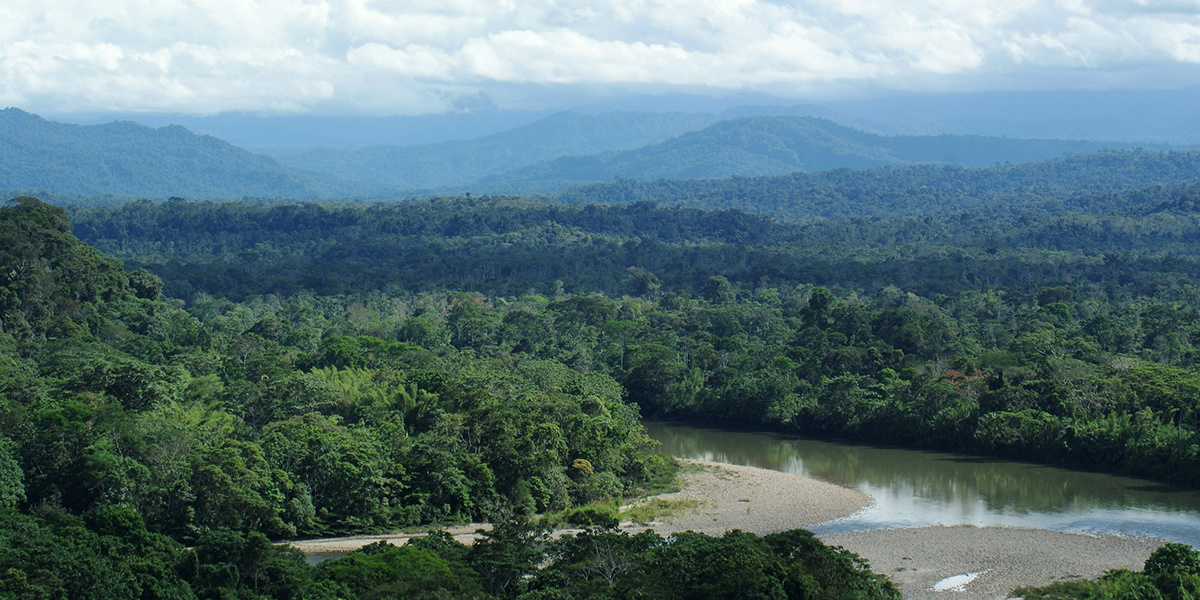

By Tim Radford
The world’s unregarded forests are at risk. Intact forest is now being destroyed at an annual rate that threatens to cancel out any attempts to contain global warming by controlling greenhouse gas emissions, according to a new study.
A second study finds that trees in the tropical regions are dying twice as fast as they did 35 years ago—and human-induced climate change is a factor.
And a third study highlights the value to humanity of intact forests, while estimating that four-fifths of the earth’s remaining woodlands are now in some way degraded by human activities. “This figure,” researchers warn, “is probably an underestimate.”
All three studies confirm the value of forests to the planet—and underline the increasingly dangerous rate of loss.
An international team of researchers report in Nature Communications that they made a computer model of the planet’s atmospheric conditions: they included natural and human-triggered aerosols, volatile organic compounds, greenhouse gases and other factors that influence temperature, one of which is albedo: the scientist’s word for the capacity of terrain to absorb or reflect solar radiation.
Cooling Effect
They tested their model against the earth’s temperature records since 1850—and then ran it again, this time with a hypothetical forest-free world.
“The result was a significant rise of 0.8°C in mean temperature. In other words, today the planet would be almost 1°C warmer on average if there were no more forests,” said Paulo Artaxo, of the University of São Paulo in Brazil.
“If we go on destroying forests at the current pace—some 7,000 square kilometers per year in the case of Amazonia—in three to four decades, we’ll have a massive accumulated loss. This will intensify global warming regardless of all efforts to reduce greenhouse gas emissions.”
The second study, in the journal New Phytologist, is a reminder of just how complex the challenge of forest conservation can be. Foresters and botanists from around the planet concentrated on the special case of the tropical rainforest, home to so much of the world’s terrestrial biodiversity, and analyzed the hazards.
These include rising temperatures, increasing carbon dioxide levels, fires, more destructive storms, insect infestation and the impact of woody vines known as lianas.
They found that trees in some areas were dying at about twice the rate they were 35 years ago.
“No matter how you look at it, trees in the moist tropics will likely die at elevated rates through the end of the century relative to their mortality rates in the past,” said Nate McDowell of the U.S. government’s Pacific Northwest National Laboratory.
“There is a host of factors that appear to be driving mortality, and the likelihood of those factors occurring is increasing.”
Such studies deliver no great surprises: they add levels of detail to a big picture that has been clearly outlined and repeatedly confirmed. Humans do not need to fell forests to find new farmland, and when they do so they damage the natural diversity on which they and other creatures depend.
Winners All Around
Healthy forests absorb carbon dioxide from human fossil fuel combustion and at the same time reduce regional temperatures.
Forests are being destroyed at a disconcerting rate, but if humans conserved them, there would be a greater chance of containing global warming to targets set by a global climate summit in Paris in 2015.
And repeated studies have confirmed that conserved forests deliver many benefits. Everybody wins.
Just how humans benefit has been spelled out yet again in the journal Nature Ecology and Evolution. Forests cover about 25 percent of the planet’s land surface, but over the past three centuries Earth has lost at least a third of its natural tree cover, due to human expansion. More than 80 percent of what remains has been affected by human action.
Vital Stabilizers
But these same forests absorb around 25 percent of carbon emissions from factory chimneys, power stations and car exhausts; they play a vital role in stabilizing local and regional weather, and they reduce the risk of drought.
Intact forests are home to higher numbers of other species; they sustain many indigenous cultures; their conservation delivers medically-beneficial plants and their degradation drives the spread of infectious diseases.
“It is well-known that forest protection is essential for any environmental solution—yet not all forests are equal,” said James Watson, of the University of Queensland in Australia and the World Conservation Society.
“Forest conservation must be prioritized based on their relative values, and Earth’s remaining forests are the crown jewels, ones that global climate and biodiversity policies must now emphasize.”
China to Plant New Forests the Size of Ireland This Year https://t.co/9Ixo9bcc6q @forestservice @WildForests @SkyRainforest
— EcoWatch (@EcoWatch) January 14, 2018
Reposted with permission from our media associate Climate News Network.

 233k
233k  41k
41k  Subscribe
Subscribe 